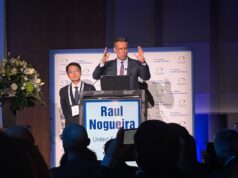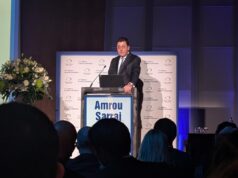 A new study has found that neurointerventionists have “essentially no financially viable access to payment recovery” through the US No Surprises Act (NSA) for professional mechanical thrombectomy out-of-network (OON) claims. The study—led by the Harvey L Neiman Health Policy Institute (HPI; Reston, USA) and recently published in the Journal of NeuroInterventional Surgery (JNIS)—generated its findings based on 1,000 simulated years of OON thrombectomy claims.
A new study has found that neurointerventionists have “essentially no financially viable access to payment recovery” through the US No Surprises Act (NSA) for professional mechanical thrombectomy out-of-network (OON) claims. The study—led by the Harvey L Neiman Health Policy Institute (HPI; Reston, USA) and recently published in the Journal of NeuroInterventional Surgery (JNIS)—generated its findings based on 1,000 simulated years of OON thrombectomy claims.
As noted in a recent press release from Neiman HPI, patients suffering a stroke or any other condition characterised by an occlusive blood clot do not have time to select their care provider based on their insurance network—and the federal NSA was enacted to protect patients from surprise medical bills when circumstances were beyond patients’ control.
However, “in effect, insurers decide what to pay based on what they consider the typical in-network rate”, the release continues, adding that physician practices have one channel through which to recoup payments from unfair insurance underpayment: the independent dispute resolution (IDR) process. And, while the process comes with “hefty fees”, batching multiple OON claims together can serve to spread out those fees.
Against this backdrop, the recently published JNIS study evaluated the likelihood that neurointerventionists can—given their stroke centre’s case volume—‘batch’ thrombectomy claims in order to spread out IDR costs and make the process financially viable.
Researchers found that, regardless of stroke centre size, the IDR process “was not viable for a vast majority of even global thrombectomy claims”, including both professional and facility costs. Specifically, only 13.2%, 6.1% and 3.3% of claims for large, medium and small stroke centres, respectively, were shown to recover payments that would exceed IDR fees, according to the modelled data. The researchers also found no opportunity for batch claims covering only professional costs to reach a sufficient quantity to at least recover IDR costs.
“The expected cost of the IDR process is US$235 if only one claim is submitted, and US$281 if multiple claims are submitted in the same batch,” stated Jonathan Grossberg (Emory Healthcare, Atlanta, USA), first author of the study. “Hence, it is financially unwise for a neurointerventionist to submit OON claims to the IDR process unless they expect payment recovery will be at least as much as the costs of entering the IDR process. This means they would need to batch at least four professional claims or at least two global claims before they can expect payment recovery [that is] more than IDR costs.
“Our 1,000 simulated years found that, for large stroke centres, 87% of OON claims could not be batched with another claim given the 30-business-day batching rules. For the 13.2% of claims that could be batched with another claim, in no instance did these batches have more than two claims. While a batch of two global claims is financially viable for entering the IDR process, the reality is that a batch of four or more claims is required to make entering the IDR process financially viable for professional claims.”
The most crucial assumption in the study’s simulation model was the OON rate, the Neiman HPI release notes. The study used an OON rate of 1.1% of commercial claims based on a recent study and, to examine the sensitivity of the results relative to this OON rate, the authors evaluated the results assuming various OON rates from 2–10% of claims.
“Even when we assumed a 10% OON rate, only 11.6% of claims could be batched with four or more claims for neurointerventionists working in a large stroke centre,” said Joshua Hirsch (Massachusetts General Hospital, Boston, USA). “This is the best-case scenario. For medium and small stroke centres, this percentage is only 3.8% and 0.7%, respectively. Likewise, assuming a 5% OON rate, these percentages are 2%, 0.9%, and 0%, for large, medium and small stroke centres, respectively.
“The NSA process was designed to protect patients from unexpected bills following non-elective medical services. Rulemaking provided insurers with lopsided power resulting in potential diminution of in-network providers. Given the nature of many neuroendovascular cases, the field is at particular risk of under-reimbursement from commercial health insurance companies and is frequently without access to IDR in a cost-effective manner, as our study shows.”










